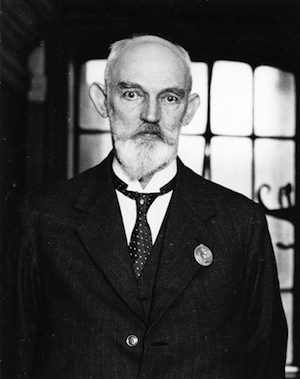Expanding or Contracting?
Einstein's Theory Predicts Universe Must be Doing One or the Other – Einstein says Neither

Image credit: University of Chicago Photographic Archive, apf6-04311, Special Collections Research Center, University of Chicago Library
Willem de Sitter
In 1917, Albert Einstein and the Dutch astronomer Willem de Sitter showed that Einstein's general theory of relativity could describe a highly simplified universe.
But when it was applied to the real universe full of stars, there was a problem.
Dr. Einstein's model predicted that either space would be expanding causing all the stars to move apart from one another as if from a gigantic explosion, or space would be contracting. This would cause all the stars to ultimately collapse upon one another.
Dr. Einstein however, believed strongly in the book Ethics by the Dutch philosopher Spinoza. A passage from this book states "It follows that God is immutable [not capable of being changed] or, which is the same thing, all His attributes are immutable." Dr. Einstein was troubled by the concept of a universe that could change.
"For now, we can add on the left side of the field equation, an unknown universal constant," Dr. Einstein said. He explained the quantity that he designates by the Greek letter lambda is called the "cosmological constant." He goes on to explain "Not much harm is done thereby…the proposed new universal constant determines the average density of the universe that can remain in equilibrium."
According to Dr. Einstein's beautiful unchangeable universe, the presumably spherical universe would be and neither expanding or contracting. •



